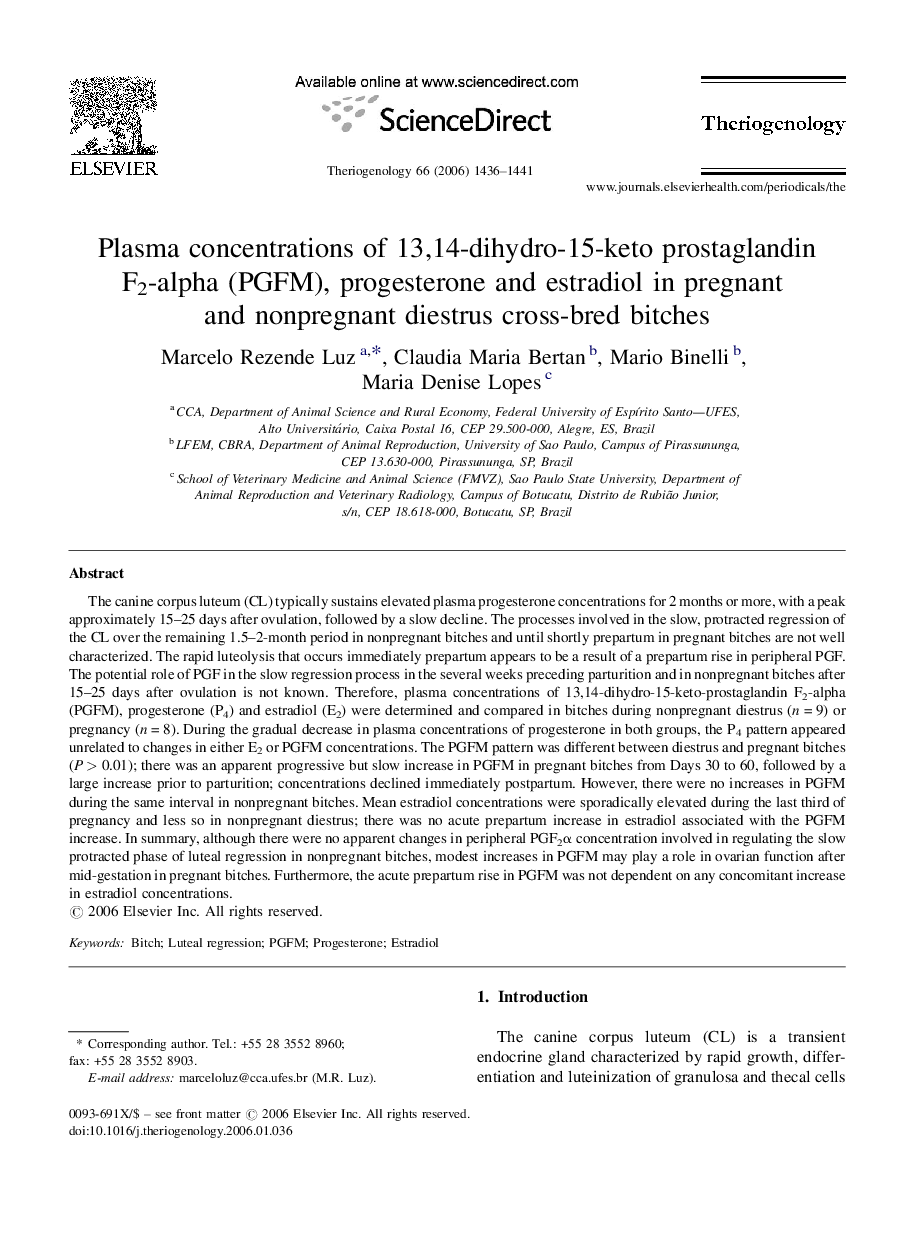| Article ID | Journal | Published Year | Pages | File Type |
|---|---|---|---|---|
| 2096724 | Theriogenology | 2006 | 6 Pages |
The canine corpus luteum (CL) typically sustains elevated plasma progesterone concentrations for 2 months or more, with a peak approximately 15–25 days after ovulation, followed by a slow decline. The processes involved in the slow, protracted regression of the CL over the remaining 1.5–2-month period in nonpregnant bitches and until shortly prepartum in pregnant bitches are not well characterized. The rapid luteolysis that occurs immediately prepartum appears to be a result of a prepartum rise in peripheral PGF. The potential role of PGF in the slow regression process in the several weeks preceding parturition and in nonpregnant bitches after 15–25 days after ovulation is not known. Therefore, plasma concentrations of 13,14-dihydro-15-keto-prostaglandin F2-alpha (PGFM), progesterone (P4) and estradiol (E2) were determined and compared in bitches during nonpregnant diestrus (n = 9) or pregnancy (n = 8). During the gradual decrease in plasma concentrations of progesterone in both groups, the P4 pattern appeared unrelated to changes in either E2 or PGFM concentrations. The PGFM pattern was different between diestrus and pregnant bitches (P > 0.01); there was an apparent progressive but slow increase in PGFM in pregnant bitches from Days 30 to 60, followed by a large increase prior to parturition; concentrations declined immediately postpartum. However, there were no increases in PGFM during the same interval in nonpregnant bitches. Mean estradiol concentrations were sporadically elevated during the last third of pregnancy and less so in nonpregnant diestrus; there was no acute prepartum increase in estradiol associated with the PGFM increase. In summary, although there were no apparent changes in peripheral PGF2α concentration involved in regulating the slow protracted phase of luteal regression in nonpregnant bitches, modest increases in PGFM may play a role in ovarian function after mid-gestation in pregnant bitches. Furthermore, the acute prepartum rise in PGFM was not dependent on any concomitant increase in estradiol concentrations.
